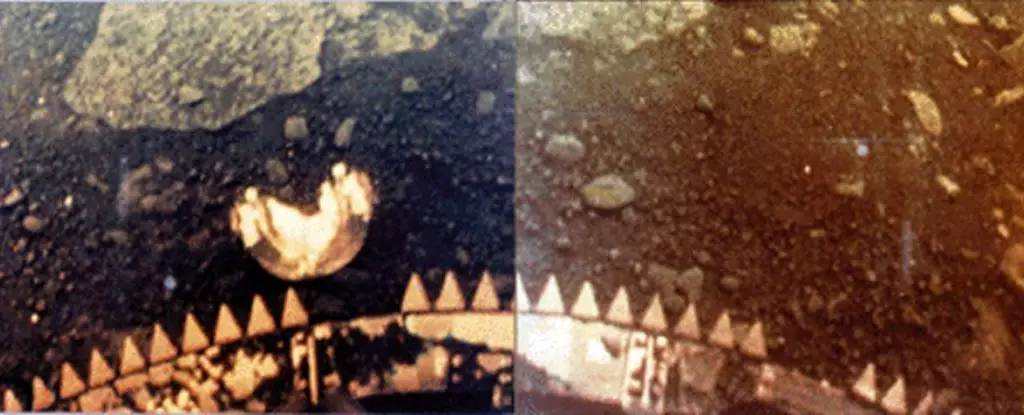Venus, our neighboring planet, offers an alluring resemblance to Earth in terms of size, composition, and density. However, the similarities end there, as Venus harbors an entirely inhospitable environment. Covered in a dense layer of toxic, acidic clouds, the surface of Venus presents a hostile landscape, not only for life but for any potential exploration. The planet’s extreme surface temperature of 464 degrees Celsius (867 degrees Fahrenheit) and atmospheric pressure nearly 100 times that of Earth’s create insurmountable challenges for scientists. Yet, amidst these adversities, we have managed to collect valuable data from the Venusian surface.
Between 1961 and 1984, the Soviet space program embarked on a remarkable mission named Venera. This ambitious program successfully launched 16 probes to explore Venus. Venera 3, in 1966, became the first probe to penetrate the atmosphere of another planet. Four years later, Venera 7 achieved a soft landing on Venus, marking another groundbreaking achievement. Although none of the subsequent Venera probes lasted more than two hours due to intense heat and pressure, Venera emerged as a pioneer by transmitting images and sounds from another celestial body.
While Venera remains the only program to have captured images and audio from the surface of Venus, subsequent advancements in image processing technology have allowed for a reinterpretation of the original data. These reimagined images depict a captivating golden-hued, alien world, emanating a sense of foreboding despite the absence of tangible indicators of the harsh conditions. The stark contrast between the images taken by Venera 9 and 10 in 1975 and Venera 13 in 1982 reveals how much progress we have made in enhancing the quality of the visuals, despite the limited capabilities of the time.
The golden hue apparent in the Venusian imagery arises from sunlight filtering through the planet’s enigmatic clouds and casting a distinct tint on the surface. Further analysis and image processing conducted at institutions like Brown University have shed light on the nature of Venus’ landscape. The rocks and dirt covering the surface exhibit a dark grayish coloration, which suggests a prevalence of basaltic volcanic features. Scientists speculate that these volcanic features, which may still be active, have contributed to the unique composition of Venus.
Despite the inherent challenges associated with exploring Venus, scientists remain determined to unravel its mysteries. The striking resemblances between Venus and Earth serve as a catalyst for further investigation, as they offer valuable insights into the divergent paths that planetary evolution can take. By comprehending the factors that lead to the development of a habitable or uninhabitable environment, we heighten our ability to search for life beyond our solar system. Exploring Venus holds the potential to answer fundamental questions about our origins and purpose in the vast expanse of the Milky Way galaxy.
While our technology has exponentially advanced since the Venera missions, we have yet to send another probe to Venus. However, space agencies worldwide have recognized the significance of studying the planet and have planned upcoming missions to probe its atmosphere. Roscosmos, the Russian space agency, stands as the sole current contender with plans to send a lander to the surface of Venus. Until such missions come to fruition, we remain captivated by the decades-old images, yearning to uncover the enigmatic landscape and unlock Venus’ hidden secrets.
Venus, the tantalizing twin of Earth, presents an awe-inspiring yet treacherous realm. Despite its resemblance to our planet, Venus boasts an unwelcoming environment that challenges even the most resilient probes. Nonetheless, the data acquired through the Venera missions has provided valuable glimpses into this alien world. By drawing upon advancements in image processing technology and ongoing scientific initiatives, we inch closer to comprehending the profound implications of Venus’ seemingly inhospitable conditions. As we continue to explore and study this mysterious planet, we unravel the intricate tapestry of planetary evolution, forging a path towards answering humanity’s most primordial questions.


Leave a Reply